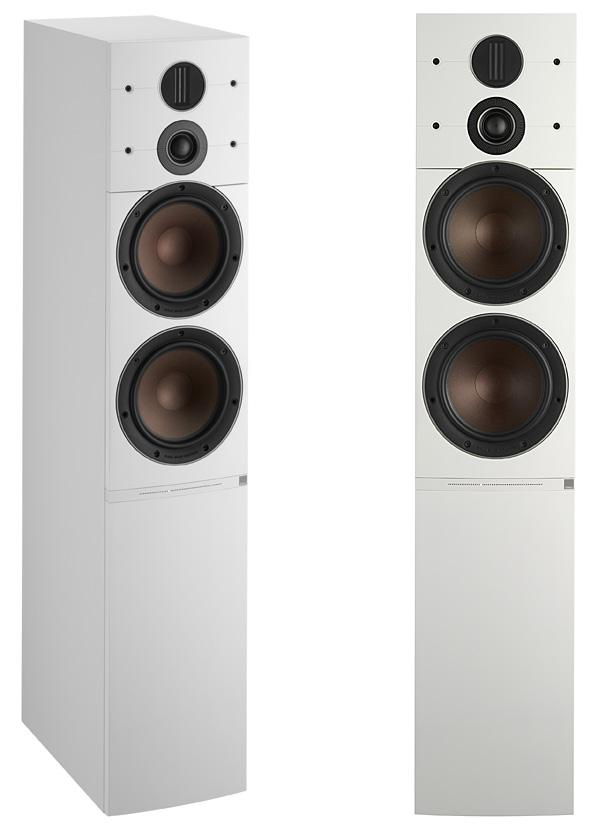Dali Callisto 6 C Wireless Loudspeakers Review

AT A GLANCE
Plus
Rich, dynamic sound
Easy setup and reliable wireless performance
Uses BluOS app for streaming
Minus
Utilitarian looks
Kinda pricey
THE VERDICT
DALI’s Callisto 6 C towers provide a reliable option for high-performance wireless hi-fi, as well as high-res multiroom streaming when paired with the BluOS NPM-1 module.
Active speakers that deliver sound via wireless connections have become a hot category in the hi-fi world. Sound & Vision has reviewed a wide range of them—everything from cheap, compact cylinders that sit on your kitchen counter and respond to voice commands, to more advanced systems designed to deliver stereo or 5.1 sound in a living room or home theater environment. The new Callisto line from Denmark's DALI (Danish Audiophile Loudspeaker Industries) belongs to the latter category. You'll find no tiny drivers or molded plastic cabinets here, let alone a built-in intelligent assistant of the Google, Alexa, or Siri stripe. Instead, the Callistos merge the convenience of wireless audio with a traditional approach to high-end speaker design.
The Callisto lineup consists of the 2 C bookshelf model and the 6 C tower that DALI sent me for review. Both speakers are designed to work with the Sound Hub, a component that serves as a preamp and wireless controller for the system. Total price for a pair of 6 C towers plus Sound Hub is $5,298. While you could simply connect analog and digital sources to the Sound Hub and get a full-functioning wireless audio system, the optional BluOS NPM-1 module ($449) takes things to the next level by adding high-res multiroom audio streaming (including support for Tidal, Qobuz, Spotify, Amazon Music, TuneIn internet radio, and more), MQA decoding, and Roon Readiness.
 The Callisto 6 C's driver complement consists of two DALI-made 6.5-inch wood fibre cone woofers paired with a high-frequency module containing a 1-inch soft dome tweeter and a 0.7 x 1.75- inch ribbon tweeter, a design the company says results in extended bandwidth and wide dispersion.
The Callisto 6 C's driver complement consists of two DALI-made 6.5-inch wood fibre cone woofers paired with a high-frequency module containing a 1-inch soft dome tweeter and a 0.7 x 1.75- inch ribbon tweeter, a design the company says results in extended bandwidth and wide dispersion.
In each speaker, separate 30-watt class-D amplifiers are used to drive the tweeter module and the woofer pair, though both are rated for 10-times peak to average power in normal use and, according to DALI, can deliver 250 watts for up to 5 seconds. Crossover filtering is carried out using 24-bit DSP, with volume control taking place just prior to the speaker's digital-to-analog conversion stage to maintain full 24-bit resolution.
The speaker's vinyl-wrapped 1-inch MDF cabinet comes in either a matte black or white finish. While grilles with plug-in attachments are provided, I found that these gave the system a somewhat utilitarian look and preferred to leave them off. Along with an IEC jack for plugging into power, an analog RCA input is included on the back of each tower for hardwired setups using a regular preamplifier.
The look and build quality of DALI's Sound Hub make it a bit of a mismatch with the Callisto speakers, but it readily gets its job done by providing switching for Apt-X HD Bluetooth, stereo analog, and optical/coaxial digital sources (plus network streaming when paired with the BluOS NPM-1 module) and conveying 24-bit/96kHz audio to the speakers over a wireless 5.8GHz connection. It also features both analog RCA preamp and subwoofer outputs plus a USB Type-A port that can be used to power an external device. The Hub's front panel features a large central volume knob with an LED display to indicate master volume level and selected input. Front panel buttons are also provided to power the unit on/off, switch inputs, and mute volume. The remote control that DALI includes with the system offers the same functions and controls the Sound Hub via a Bluetooth link.
Setup and Use
I set up the 6 C towers in my living/ listening room by first attaching the included rubber feet on each speaker and placing them about 24 inches in from the back wall. Unlike many other speakers, the Callistos are designed for straight-ahead setup instead of a toed-in alignment—a factor that eased installation. The Sound Hub sat on my audio component rack in the same room, with a Pioneer BDP-88FD universal disc player plugged into its analog and coaxial digital inputs and a powerline adapter connected to its LAN port via Cat6 cable for a network connection. Making a wireless link between the Sound Hub and speakers was a simple matter of pressing a button on the Sound Hub's rear panel and then doing the same in sequence for each 6 C tower.





























































